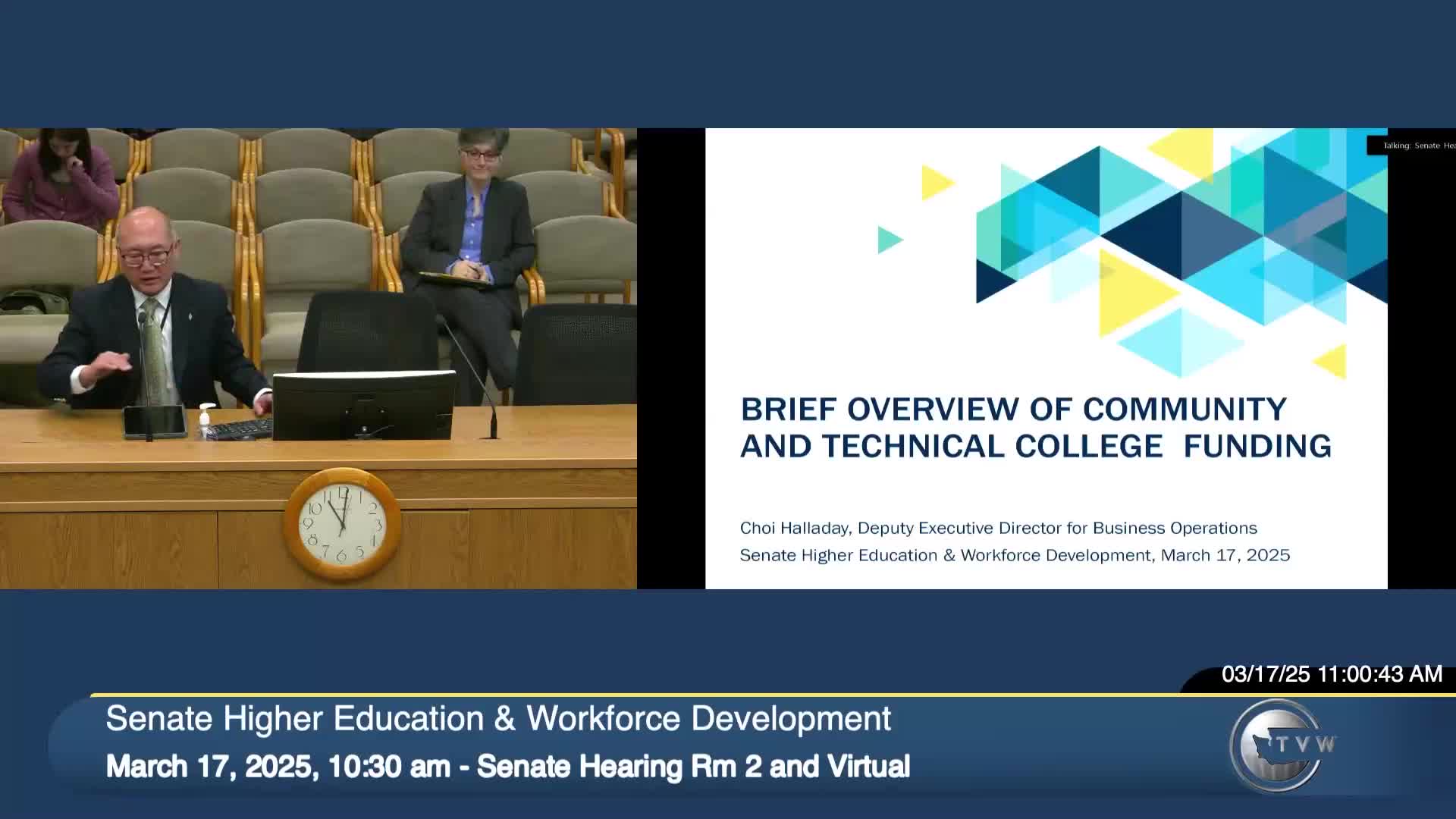Washington community colleges face funding challenges amid rising operational costs
March 17, 2025 | Higher Education & Workforce Development, Senate, Legislative Sessions, Washington
This article was created by AI summarizing key points discussed. AI makes mistakes, so for full details and context, please refer to the video of the full meeting. Please report any errors so we can fix them. Report an error »

Washington's community colleges are set to navigate significant funding challenges as they serve nearly 290,000 students across 34 districts, according to discussions from the Senate Higher Education & Workforce Development meeting held on March 17, 2025. The meeting highlighted the complexities of funding allocation and the pressing need for financial support to maintain educational services.
Community colleges in Washington are experiencing a funding model that relies heavily on a combination of state appropriations, tuition fees, and grants. Last year, the total allocation from the state was approximately $1.1 billion, with tuition contributing around $350 million and grants totaling $546 million. Notably, a substantial portion of grant funding—about $360 million—came from federal sources, underscoring the importance of federal support in sustaining college operations.
The meeting revealed that 58% of community college students are first-generation college attendees, and 53% are students of color, highlighting the critical role these institutions play in providing access to higher education for underrepresented groups. However, the colleges face challenges due to rising operational costs driven by inflation, which have outpaced the typical tuition increase of around 3% per year.
The funding model discussed includes a unique allocation process where the state board distributes funds based on a formula that considers factors such as enrollment size and performance metrics. This model aims to ensure that colleges with higher enrollment and those offering in-demand programs receive adequate funding. However, the reliance on performance metrics for funding distribution raises concerns about equity and the ability of all colleges to meet these benchmarks.
Additionally, the meeting addressed the difficulties of providing essential services, such as subsidized meal programs, due to the requirement that enterprise operations be self-supporting. This constraint complicates efforts to address food insecurity among students, a growing concern in the current economic climate.
As Washington's community colleges prepare for the upcoming academic year, the discussions from this meeting underscore the urgent need for a reevaluation of funding strategies to ensure that these institutions can continue to serve their diverse student populations effectively. The implications of these funding challenges will be closely monitored as stakeholders seek solutions to enhance educational access and success in the state.
Community colleges in Washington are experiencing a funding model that relies heavily on a combination of state appropriations, tuition fees, and grants. Last year, the total allocation from the state was approximately $1.1 billion, with tuition contributing around $350 million and grants totaling $546 million. Notably, a substantial portion of grant funding—about $360 million—came from federal sources, underscoring the importance of federal support in sustaining college operations.
The meeting revealed that 58% of community college students are first-generation college attendees, and 53% are students of color, highlighting the critical role these institutions play in providing access to higher education for underrepresented groups. However, the colleges face challenges due to rising operational costs driven by inflation, which have outpaced the typical tuition increase of around 3% per year.
The funding model discussed includes a unique allocation process where the state board distributes funds based on a formula that considers factors such as enrollment size and performance metrics. This model aims to ensure that colleges with higher enrollment and those offering in-demand programs receive adequate funding. However, the reliance on performance metrics for funding distribution raises concerns about equity and the ability of all colleges to meet these benchmarks.
Additionally, the meeting addressed the difficulties of providing essential services, such as subsidized meal programs, due to the requirement that enterprise operations be self-supporting. This constraint complicates efforts to address food insecurity among students, a growing concern in the current economic climate.
As Washington's community colleges prepare for the upcoming academic year, the discussions from this meeting underscore the urgent need for a reevaluation of funding strategies to ensure that these institutions can continue to serve their diverse student populations effectively. The implications of these funding challenges will be closely monitored as stakeholders seek solutions to enhance educational access and success in the state.
View full meeting
This article is based on a recent meeting—watch the full video and explore the complete transcript for deeper insights into the discussion.
View full meeting
